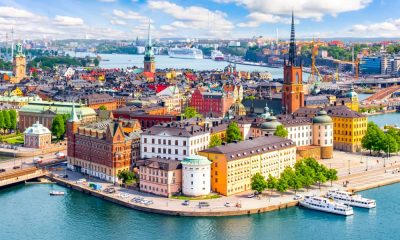Travel
Ultimate Guide On Travelling Through Europe On A Backpacker’s Budget
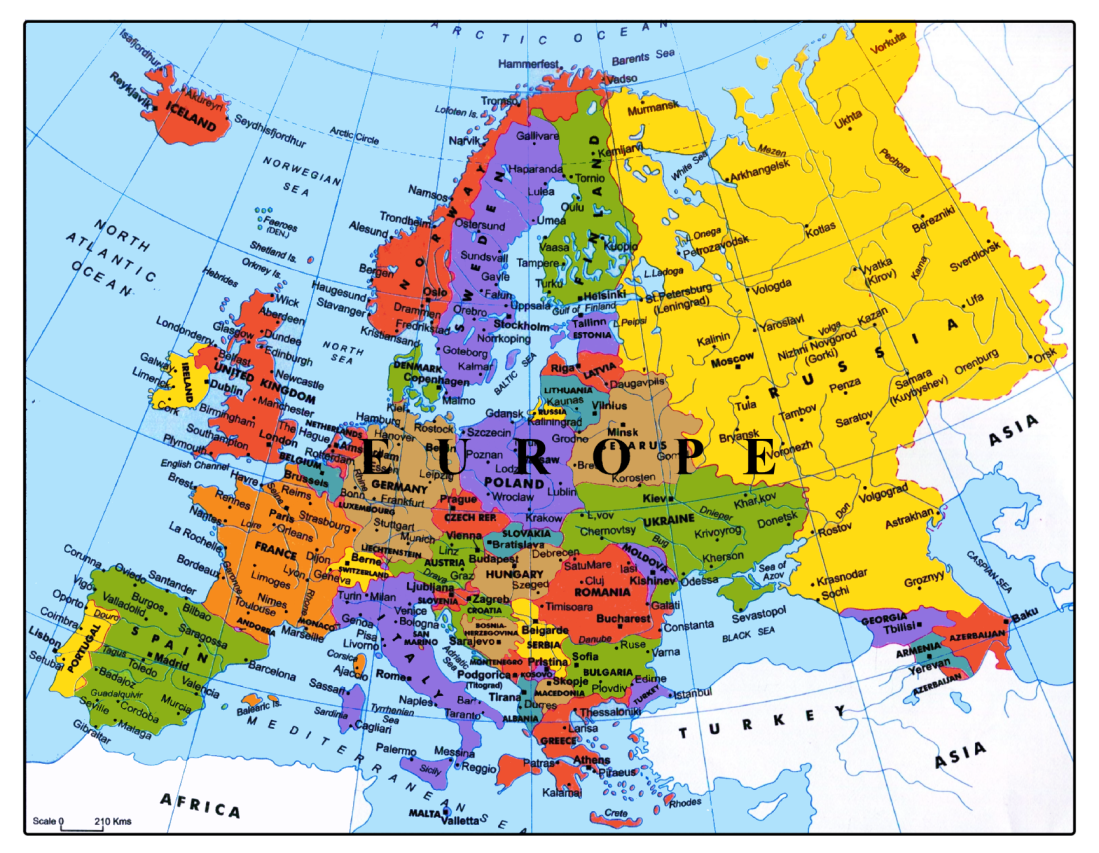
Europe can intimidate travelers. It’s hard to know how to go around this interesting continent with so many countries side by side, each with its own language, culture, and way of life.
Europe has no “best” travel route. Every country is distinct and worth visiting.
One country can be explored for months. You can take a large tour, visiting several countries and absorbing their cultures.
Europe is affordable no matter how you visit. Young, budget-conscious visitors can easily navigate this tangle of countries.
Follow these steps before and throughout your European vacation to control your expenditure.
Here are my best ideas for backpacking Europe on a budget.
How to travel Europe on a budget
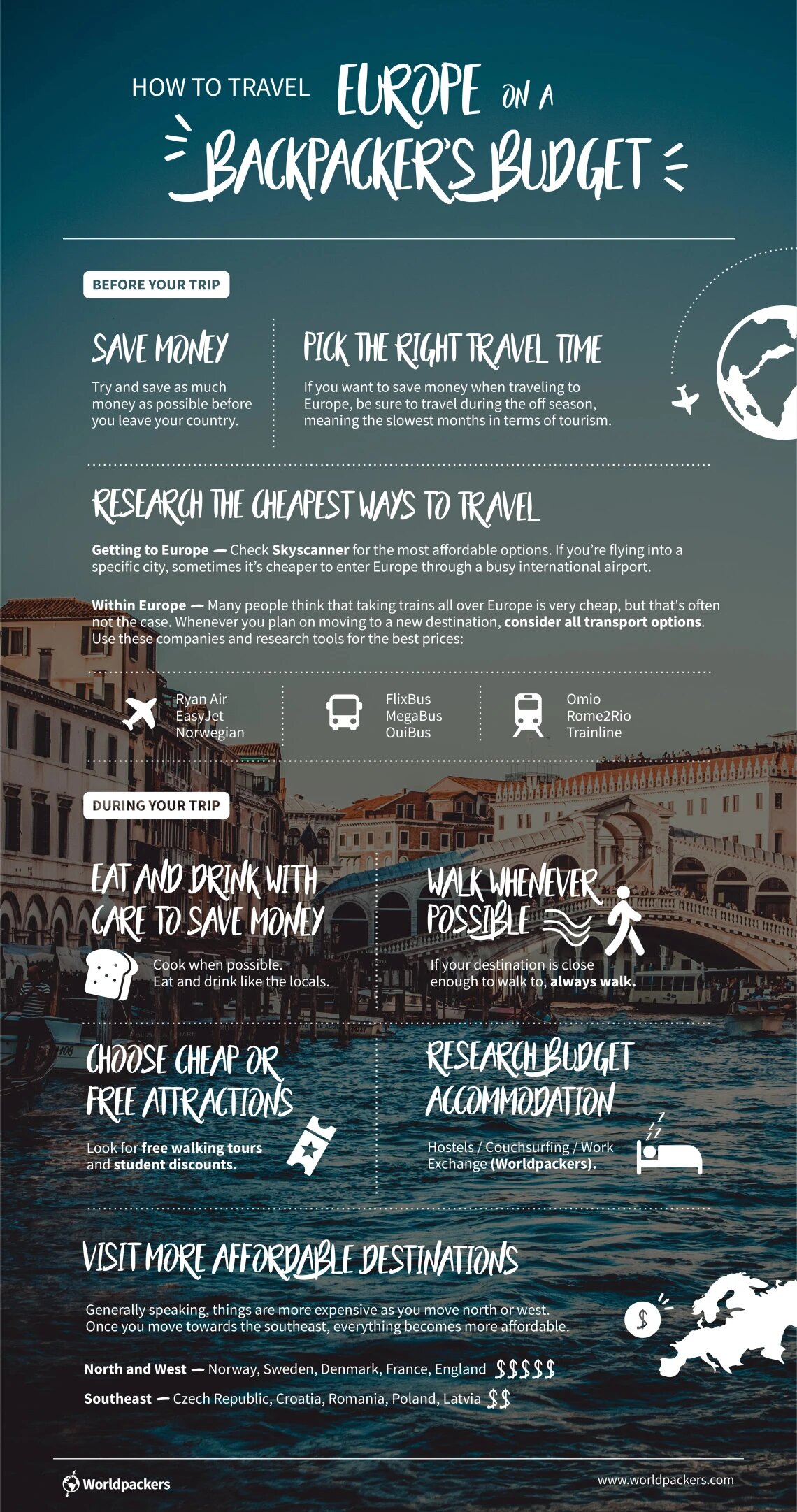
Before your trip
1. Save, save, save
Before leaving for Europe, save as much as you can. If you’re not working overseas, a strong savings account will make traveling more comfortable. Always have adequate spending money and maybe some emergency money.
Once you’re abroad, you’ll be glad you worked extra shifts or cut back at home.

2. Pick the right travel time
After saving enough money and planning your Europe trip, decide when to go. Several factors determine when to visit Europe.
Budget tourists prioritize cost. Off-season travel (meaning the slowest months in terms of tourism) to Europe saves money.
Due to good weather, June, July, and August are Europe’s busiest months, hence flights are pricey. Since December, January, and February are colder and less popular, flights to Europe are cheaper.
Travel during “shoulder season”—spring or autumn—for cheap flights and good weather.
Winter travel is obviously less comfortable. It depends on your priorities. Buy a winter coat and endure the cold to save money. Don’t allow off-season weather stop you from visiting Europe.
Winter in many countries is amazing regardless. Consider skiing in the Alps, Christmas markets in Germany, Austria, or Denmark, dog-sledding in Scandinavia, or snowy villages in Transylvania. There is truly never a bad time to travel Europe. Europe is beautiful year-round, so get the cheapest airfares and make most of your time.

3. Research The Cheapest Ways To Travel Around Europe
Getting To Europe
Europe flights can be found cheaply online.
Skyscanner offers cheap flights. This website lets you choose your departure airport, “cheapest month,” and “anywhere” destination airport. This lets you find the most affordable dates and airports.
If you’re going into a specific city, it may be cheaper to enter Europe through a large international airport like London or Paris and take a connecting flight.
Be open-minded while booking flights. Europe can be affordable if you’re creative.
Within Europe
Start planning your European journey after buying your flights.
If you’re traveling many countries, it’s helpful to conduct some research before booking your transportation.
Trains across Europe are often more expensive than people expect. Consider all transport options while moving.
Airplane
Sometimes it’s even cheaper to fly between countries than it is to take a train.
Europe is packed with cheap, budget airlines, like RyanAir, EasyJet, and Norwegian. Budget airlines often charge lots of money for baggage, however, since their flight prices are so low. So these airlines are best if you are only traveling with a carry-on.
But sometimes, you can find flights for under $10 USD, which is truly amazing.
Bus
Europe’s buses are cheap.
FlixBus, MegaBus, and OuiBus are economical, trustworthy bus companies. MegaBus costs $20 from London to Amsterdam or Brussels, and OuiBus costs $20 from London to Paris.
Buses take longer than trains and planes. Bus travel is frequently the cheapest if you have time.
Train
Europe loves trains, but prices vary.
Trains cost substantially more than buses in the UK and western Europe. Eastern and southern European trains are cheap.
Omio (previously GoEuro) and Rome2Rio are helpful for researching rail prices by country. These sites let you choose the cheapest rail, bus, or fly between two destinations.
Trainline, Europe’s top train and coach app, is very useful. Trainline offers hundreds of locations in 45 European countries through 207 train and coach providers. Trainline’s goal is to combine train, coach, and other travel services into one experience so consumers can get the cheapest fares and smart, real-time travel knowledge on the go.
Before to Europe, explore all your possibilities. Your wallet will thank you.

During your trip
1. Eat and drink with care to save money on food in Europe
Cook When Possible
Buying drinks and food is one of the most expensive aspects of traveling. With so many world-renowned cuisines, wines, and beers at your disposal in Europe, you must try them all.
However, you can do so with caution to avoid emptying your funds too rapidly. Begin by visiting the local food market, which can be fo
und in practically every European city. Fresh food for cooking and distinctive local goods can be found here at reasonable costs. Cooking at home rather than eating out will save you a lot of money on food.
Eat like the locals
If you do dine out, stay away from the overpriced, touristy restaurants where the food is more generic. For higher quality, more traditional dishes than are most likely more affordable, so seek out authentic local restaurants.
These places will usually be hidden away, far from crowded tourist attractions and without a flashy sign out front. Ask locals where their favorite restaurant is, and you will certainly find a hidden gem for dinner.\
Drink like the locals
A similar logic applies when drinking
Instead of bar cocktails, buy booze at the liquor shop. You’ll save heaps and locate local drinks at the store. On a night out, drink like the locals. Choose local wine in Italy, Spain, and France. Try local beer in Germany, Czech Republic, or Belgium.
Try Brennevin in Iceland, Vodka in Poland, Port in Portugal, Rakija in Croatia and Serbia. Follow the locals! The traditional alcohols are not only an insight to the culture, they are usually cheaper since there is a higher demand for them.
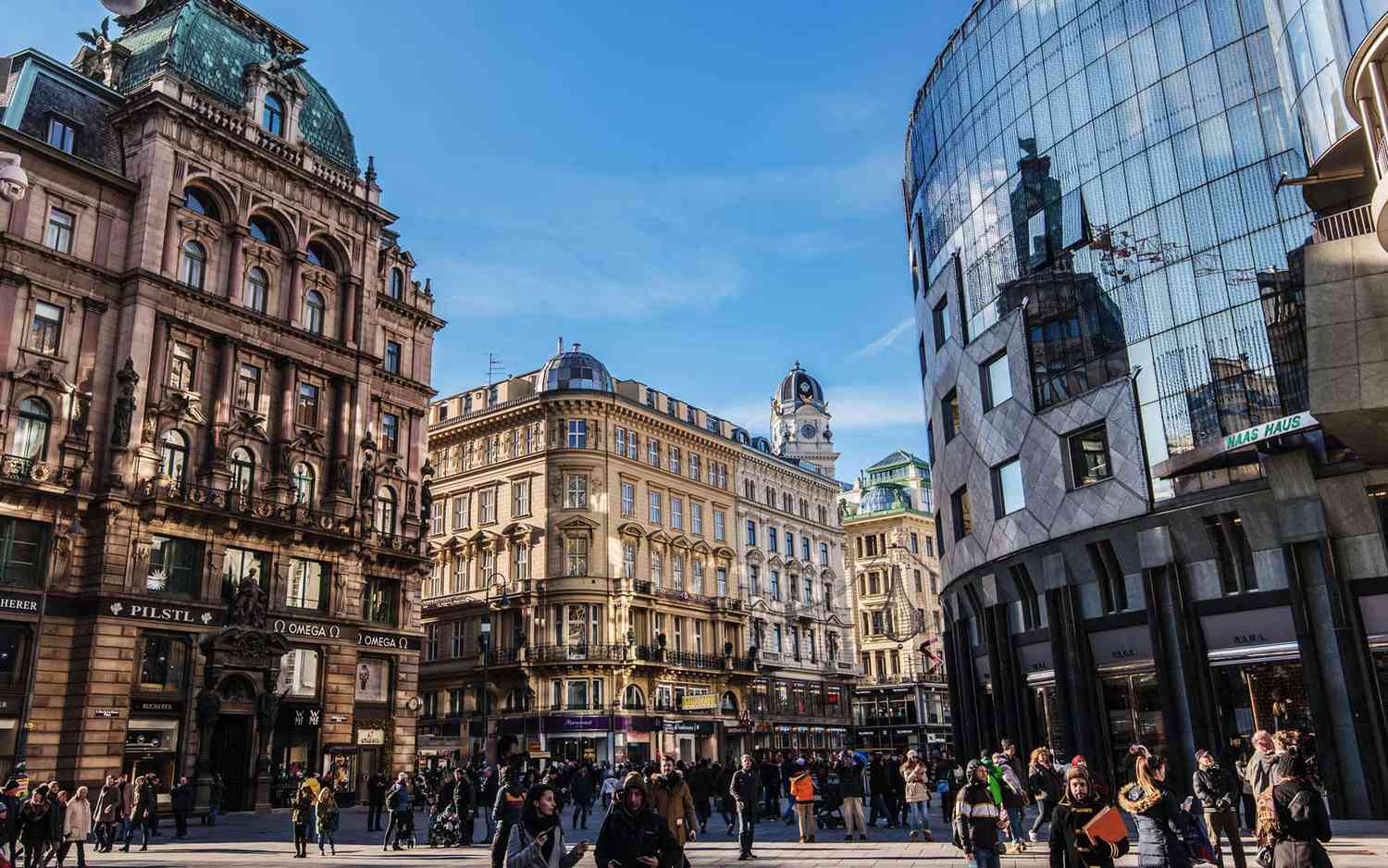
2. Walk whenever possible
If your destination is close enough to walk to, always walk. You get good exercise, you have more time to soak in the details of the world around you, and you don’t need to spend any money.
Exploring a foreign city on foot is magical, though if you do need to pay for travel, try and take public transport rather than a taxi. Riding the local bus or tram is always cheaper than a taxi, and you can still interact with locals while you travel.
3. Choose cheap or free attractions
Tourist attractions often cost too much in touristy cities. Don’t feel like you have to participate in every activity your guidebook recommends.
If an attraction truly interests you, do it and know your money will be worth it. Don’t pay to visit a museum or gallery just because you should.
Search “Free Things To Do In…” to find cheap things to do in a foreign country. Many cities have wonderful parks for picnicking and walking. Use free walking tours in several cities. Curiously Erin lists Europe’s top free walking excursions.
They’re run by locals and can teach you as much about a city’s history and culture as a museum. Always carry your student ID. Don’t miss student discounts at many attractions.
Certain cities offer travelers affordable bargains.
Given London’s high cost of living, public museums are free. You may save a lot while learning about London’s history, art, and culture.
Many major sites in Italian cities are free on the first Sunday of each month. The Colosseum, Roman Forum, Uffizi Gallery, and Michaelangelo’s David in Florence all free to see.
You may locate affordable activities to do in Europe by researching the towns you’re visiting.
Naturally, the best European beaches and nature destinations are free.

4. Research budget accommodation
Hostels
Accommodation is another major travel expense.
Hostels are cheaper than luxury hotels, despite their allure. Europe has many backpacker hostels. Hostel dorm rooms typically $15–30 USD per night, while in Eastern European towns, they can cost under $10.
Read HostelWorld reviews to learn what other travellers think of each hostel. Centrally placed hostels feature comfortable common spaces where you can meet other tourists.
Couchsurfing
You can also try Couchsurfing to save even more money on accommodation. This online platform allows locals to offer their couches or spare beds to travelers for free. Again, always read reviews before agreeing to stay somewhere, and never stay somewhere that you don’t feel comfortable.
Work Exchange
Work with Worldpackers to save money to get free lodging.
Hostels, farms, and small businesses often hire tourists for a few weeks in exchange for a free bed and meals. Work exchanges let you explore the area, meet locals, and save money.
Worldpackers hosts offer these employment exchanges, and Europe’s Worldpackers opportunities are great.
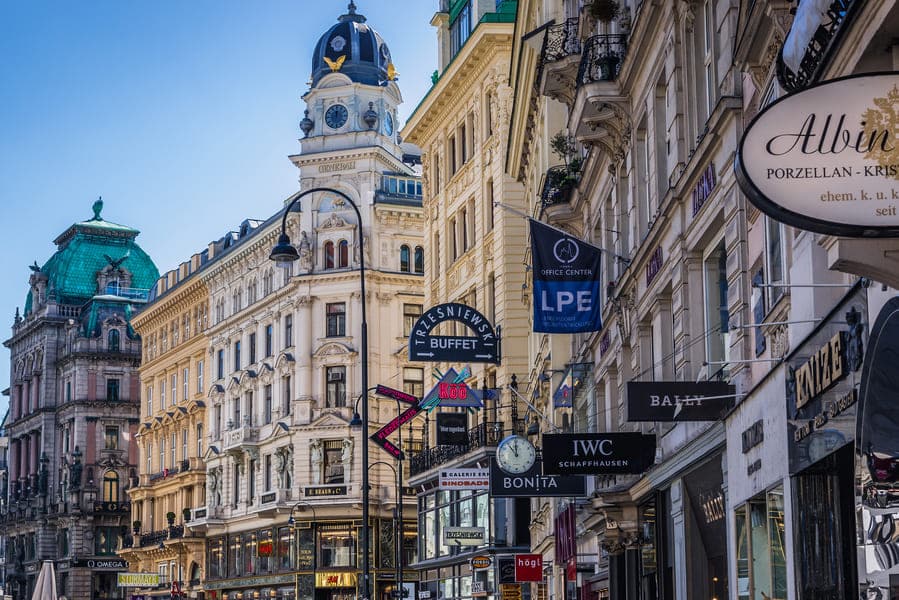
5. Visit more affordable European destinations
Make sure your trips meet your budget because Europe’s cost of living differs.
North and west cost more. London, Paris, and Scandinavia have expensive food, lodging, and attractions. Portugal is cheaper than most of its western neighbors, and you may find budget options in these more costly places.
Moving southeast makes things cheaper. Czech beer costs $1. A full supper in Romania costs $5, and a hostel in Croatia costs $6 USD. South-eastern Europe is the cheapest place to travel.
Europe has unlimited destinations. Countries with distinct cultures and landscapes are found in every continent. Cities and towns in every country await exploration.
Visit Europe’s lesser-known countries and cities.
Barcelona, Paris, Prague, Athens, Budapest, Lisbon, Madrid, and Venice are beautiful and worth visiting. There are several cities with similar charm and fewer tourists. Everything is cheaper farther from touristic spots.
Warsaw’s Old Town is charming and historic. Sofia, Bulgaria has hearty meals and pleasant residents, while Riga, Latvia has stunning architecture. Explore the Alps, Albania, and Scotland. Explore Portugal, Spain, and Italy’s secret tiny towns for true local traditions.
Europe is simply full of beautiful locations and fantastic experiences. Always travel with an open mind, and don’t let money interfere with any of your travel goals.
These strategies, preparation, and smart travel can make any European destination affordable.









